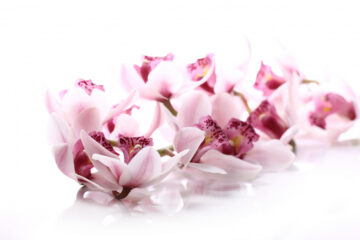As you stroll through a bustling flower market, your eye is drawn to a vibrant display of asters. Their delicate petals, resembling a starry night sky, seem to twinkle with an ethereal charm. Intrigued, you pause to ponder the allure of these captivating flowers.
What is it about asters that make them so enchanting? And why are they considered a flower for every season? In the pages that follow, you will uncover the secrets behind the starry charm of asters, discovering their rich cultural significance, symbolic interpretations, and practical care tips.
Prepare to be captivated by the timeless beauty and versatility of this beloved flower.
Aster’s Cultural Significance
Aster’s cultural significance is rooted in ancient beliefs and mythology, making it a flower with a rich and symbolic history. These daisy-like flowers bloom in late summer, adding a burst of color to gardens and landscapes.
In Victorian flower language, asters were associated with love and were often given as a gift to express deep affection. White asters, in particular, were a symbol of purity and innocence.
In New England, asters hold a special place as they’re the state flower of Massachusetts.
The aster plant has also been used medicinally throughout history, known for its healing properties.
With its diverse meanings and deep cultural connections, the aster remains a beloved and cherished flower.
Story and Origins
The story and origins of asters can be traced back to ancient Greece, where they were associated with the Titaness goddess of falling stars, Asteria. The name ‘asters’ originates from a Greek term that translates to ‘star,’ reflecting the flower’s resemblance to a starburst.
Asters have a rich history rooted in Greek mythology, and they symbolize love, achievement, faith, courage, and patience. These beautiful flowers bloom in late summer and are available in various colors, including purple, red, and blue. Each color carries its own symbolism, with purple asters representing wisdom and blue asters symbolizing love and devotion.
Asters are also the birth flower for September, making them a meaningful gift for those born in this month.
Aster Flower’s Symbolic Interpretations
As we explore the symbolic interpretations of asters, we uncover the deeper meaning behind these vibrant flowers and their significance in various cultures. Asters are often associated with late summer and early fall, making them a perfect flower to symbolize the changing seasons.
Their name derives from the Greek word for ‘star,’ which is fitting considering their daisy-like flowers that resemble a starburst. In terms of flower meaning, asters symbolize love, achievement, faith, fortune, courage, patience, and intelligence.
The flower comes in various colors, but purple asters are particularly popular and are often used in floral arrangements as cut flowers. Whether gifted alone or paired with other flowers, asters make a meaningful gesture to express love and admiration.
Symbolism in Different Cultures
Symbolism in different cultures reveals the diverse interpretations of asters and their significance worldwide.
In Greek mythology, asters were believed to have been created from the tears of the Goddess of love, Aphrodite. This connection to love and beauty carries through to modern times, where asters are often associated with romance and devotion.
In Buddhism, asters symbolize new beginnings and spiritual growth, while in Hinduism, they represent strength, faith, and hope.
The color of asters also plays a role in their symbolism. White asters symbolize purity and innocence, while lavender-blue flowers represent elegance and grace.
No matter the culture, asters carry a predominantly positive message, making them a beloved flower in many parts of the world, especially during the summer and fall seasons.
Caring for Aster Plants
To care for aster plants and ensure their longevity, follow these simple steps.
- When growing and caring for perennial asters, it’s important to trim the stems at an angle to allow for optimum moisture intake. This will help the flowers last longer in both the garden and flower arrangements.
- Change the water regularly to prevent bacterial growth and premature wilting. Additionally, removing submerged leaves will further prevent bacterial growth and maintain the freshness of the blooms.
- To prolong the vase life of asters, feed them every few days with a floral food solution.
- Lastly, regularly trim the stems to maintain their longevity and freshness.
Best Occasions for Gifting Asters
For special occasions and meaningful gestures, consider gifting asters, a versatile flower with a rich symbolic meaning.
Asters are perfect for birthdays, anniversaries, and as a thoughtful gesture for September babies, as they’re the birth flower for that month.
These vibrant flowers bring positive energy and are a symbol of wisdom and love. With their wide array of colors, including blue, purple, white, red, and pink, you can choose the perfect shade to convey your feelings.
Whether you want to express affection towards your best friend or show your love to a special someone, asters are a great choice. You can add a personalized card with an inspiring message:
They bloom abundantly from summer to early fall, making them an ideal gift for your loved ones during this season.
Consider gifting aster seeds for a lasting and meaningful present.
Concluding Thought
As you reflect on the versatility and symbolic meaning of asters, it becomes clear that these vibrant flowers are a truly meaningful gift for any occasion.
Asters have a long-standing association with star symbolism, which is fitting considering their name, which translates to ‘star’ in Greek. These flowers aren’t only visually stunning, but they also hold deep significance.
Asters symbolize love and affection, making them a perfect gift to express your feelings to someone special. Whether you’re celebrating a birthday, anniversary, or simply want to show someone you care, asters are a great choice.
In New York, where asters are native, they’re particularly significant for September birthdays, as those born in this month are lucky enough to have asters as their birth flower. Additionally, asters attract bees and butterflies, adding beauty and life to any garden or floral arrangement.
You can find details and meaning for other flowers on our dedicated section
Frequently Asked Questions
Do Asters Bloom All Season?
Yes, asters bloom all season, bringing vibrant color to your garden or flower arrangements. Their abundant blooms in late summer and early fall make them a perfect choice for adding a touch of beauty to any space.
Will Aster Bloom More Than Once?
Yes, asters can bloom more than once, depending on the variety. With proper care, such as regular watering, deadheading, and pruning, you can enjoy their beautiful blooms multiple times throughout the season.
Do Asters Come Back Every Year?
Yes, asters come back every year like a loyal friend. With proper care, they’ll grace your garden with their daisy-like blooms in late summer and early fall, adding vibrant colors to your outdoor oasis.
What Does the Star Aster Symbolize?
The star aster symbolizes love, achievement, faith, fortune, courage, patience, and intelligence. It comes in various colors, each representing different meanings. This versatile flower adds beauty and charm to any floral arrangement or event.





